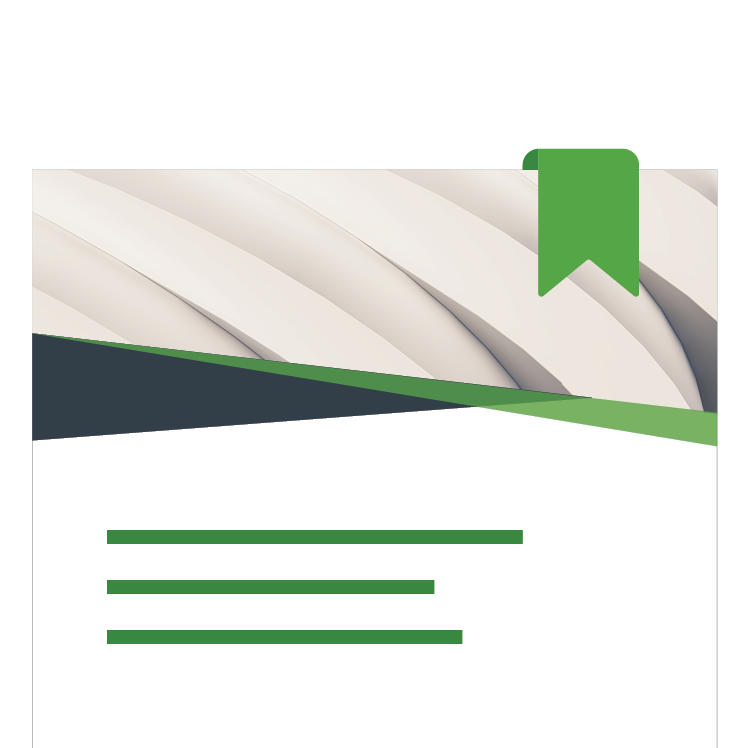Why active ETFs, Why now?
Learn how these funds fit into modern portfolio construction
- Active ETFs combine some of the most useful features of ETFs—liquidity, transparent fees, favorable tax treatment, and diversification—with active management.
- The wide range of investment approaches among active ETFs means that these funds can serve a variety of roles in a client portfolio, from achieving exposure to the broad market or a narrow market niche, to seeking income generation, to possibly acting as a defensive hedge.
- Active ETFs can be a useful tool in the portfolio construction tool kit during periods of market volatility.

Exchange-traded funds (ETFs) have steadily risen in prominence and assets since they were first developed in the early '90s. They've won the favor of both Wall Street traders and Main Street financial advisors by allowing investors to obtain exposure to passive strategies in a low-fee wrapper. But if much of the utility of ETFs derives from passive index-tracking, is an active ETF just an oxymoron? Far from it. Active ETFs have some unique advantages—and they're surging in popularity with investors and asset managers. Here's why.
History of the vehicle
The first exchange-traded fund, the S&P 500®-tracking SPDR, launched 30 years ago. Active ETFs were slower to follow. A single short-term fixed income active ETF1 was launched in 2008, but it took more than a decade for another asset management firm to expand on the experiment, even as overall assets held in ETFs climbed from $531 billion in 2008 to $7.9 trillion in 2021.2
An important new ruling from the SEC in 2019 helped revive interest in active ETFs. The SEC's updated regulations allowed for actively managed ETFs to create custom creation/redemption baskets, as well as the option to use a proxy portfolio for the fund's daily disclosures. The proxy portfolio closely approximates but does not precisely match the fund's holdings, allowing active portfolio managers to execute their strategy without immediately revealing their actions to the broader market. Perhaps most importantly, the new rules offered a more straightforward path for ETFs to be reviewed and approved by regulators, making it simpler to create and launch any style of ETF. Please see the disclosure below for risks of semi-transparent active equity ETFs.
Since the SEC's ruling, active ETF fund launches and inflows have risen quickly, with about 150 active ETFs debuting in 2020, a figure which nearly doubled to 291 in 2021.3 As of June 2023, there were over 1,100 active ETFs.4
Understanding the features of active ETFs
The spurt of investor interest in active ETFs is easy to understand: They combine some of the most useful features of ETFs with the advantages of active management. And because they're not bound to an index, managers can execute a broader range of strategies, such as thematic investing. Here are some of the features:
- Liquidity. Active ETFs trade intraday, providing liquidity and flexibility to investors during periods of volatility.
- Favorable tax treatment. Active ETFs can use in-kind redemptions, thereby accruing fewer capital gains for investors while they hold the fund (though capital gains may still be incurred when the shares of the ETFs are sold).
- Diversification. ETFs are composed of a portfolio of securities. Using a diversified investment to achieve active exposure, rather than investing in an individual stock or a bond, may help reduce portfolio risk.
- Transparent fee structure. Management fees for active ETFs are typically similar to those of traditional active funds. However, management fees are generally the only fees incurred with active ETFs, resulting in transparent fee structure, and often, lower overall costs. Because ETFs are simpler to manage for fund providers, the overall fees may be lower than those of a comparable mutual fund.
- Outperfomance is a goal. Active ETFs offer diverse strategies which may aim to outperform their benchmark through skill, rather than simply tracking an index. Outperformance is never a guarantee for any fund—but it's not the intention of an index ETF.
- Nimble when it's volatile. The portfolio managers of an active ETF have the ability to analyze the business cycle and trade proactively to try to insulate their strategies from shocks during periods of volatility.
Role in a portfolio
As the number of active ETFs has increased, so has the variety of strategies now being offered in the active ETF format from narrow sector-specific funds to those offering broad market exposure. Fixed income funds were among the first types of active ETFs to launch, and asset managers are now offering a wide variety of duration, yield, and sectors as active bond ETFs, allowing investors to achieve exposure to both core fixed income strategies and more specific niches like collateralized loans or emerging market bonds through the active ETF format. Similarly, while some active ETFs are run by managers taking a bottom-up, fundamental analysis approach, others apply a variety of quantitative approaches to seek enhanced alpha.
Like stocks, because they don't have to rely on an underlying index, active ETFs (like active mutual funds) can use many different investing strategies. For example, thematic active ETFs can invest across sectors in a general theme that investors feel may outperform, such as artificial intelligence or other disruptive technologies.
The wide range of investment approaches among active ETFs means that these funds can serve a variety of roles in a client portfolio, from achieving exposure to a narrow market niche, to seeking income generation, to possibly acting as a defensive hedge in periods of market volatility. Advisors looking to build out client portfolios may find that active ETFs provide additional opportunities.
Other considerations
The factors we mention above have certainly piqued investors' interest when it comes to active ETFs. But they're not a perfect tool in every situation or for every investor.
For example, while the ability to trade intraday and relative liquidity of ETFs help enable them to potentially be used for tax-loss harvesting, if generating tax-loss harvesting alpha in volatile markets is a priority a custom separately managed account or direct indexing solution may be a more powerful instrument (see "Comparing taxable approaches between ETFs and custom SMAs," below).
Additionally, investors often include active funds in their portfolios to seek outperformance. But even the best of portfolio managers may find their investing edge blunted as their funds grow more popular. As assets in a fund rise, portfolio managers often face the dilemma of either adding names in which they have less conviction or increasing concentration risk in their existing bets. Traditional active mutual fund managers can address this problem by closing their funds rather than diluting their strategy. Because they're exchange-traded, active ETFs cannot be closed to new investors in the same manner. Lastly, semi-transparent active ETFs may face greater arbitrage risk than passive ETFs or even active, but transparent, ETFs. With most exchange-traded funds, market makers can instantly spot differences between the ETF's share price and the prices of the underlying basket of securities the ETF holds, and such tracking errors are swiftly brought into line.
Conclusion
The expansion of active ETFs allows advisors and their clients to access a broader range of strategies through the ETF format. With an active ETF, investors don't lose any of the liquidity, fee transparency, and tax advantages that are the features of more common index ETFs. Even more, investors can select active ETFs that reflect their market views, and gain access to active managers who have the ability to set their own paths rather than simply following an index. In periods of strong market volatility, that can make an active ETF a useful tool in an investor's portfolio construction toolbox.
Comparing taxable approaches between ETFs and Custom SMAs
ETFs are typically seen as more tax efficient than mutual funds, primarily because they use in-kind redemptions to accumulate fewer internal capital gains that are passed on to investors as taxable distributions.
Recently, advances in investing technology and reductions in trading fees have made separately managed accounts (SMAs) accessible to a wider range of investors. SMAs allow investors to own the underlying securities themselves, which may allow pieces of this "basket" of securities to be bought and sold without selling the whole basket. This approach allows investors to potentially benefit from tax loss harvesting of individual securities that are at a loss, even if the overall basket has shown a gain.
"Custom SMAs" go a step further. These types of accounts may allow investors to combine the diversification of an active ETF with the potential tax benefits of an SMA. Custom SMAs can be built to mirror a specific index or may be customized to target specific investment needs or a differentiated investing strategy like that of an active ETF. Because they require more management than ETFs, SMAs and custom SMAs may carry higher minimums and higher management fees, which investors should weigh against the potential for harvesting tax losses. Advisors working with clients who are concerned about taxable accounts may want to consider whether SMAs or Custom SMAs may be a benefit.
Related insights
View All


Endnotes
1. GlobalCustodian.com, "Bear Stearns Begins Trading of First Actively Managed ETF," https://www.globalcustodian.com/bear-stearns-begins-trading-of-first-actively-managed-etf/
2. Statista.com, "Total net asset under management (AUM) of Exchange Traded Funds (ETFs) in the United States from 2002 to 2022." https://www.statista.com/statistics/295632/etf-us-net-assets/
3. Lynch, Katherine. "7 Charts on the Rapid Ascent of Active ETFs," Morningstar.com, https://www.morningstar.com/etfs/7-charts-rapid-ascent-active-etfs
4. https://www.morningstar.com/funds/7-charts-rapid-ascent-active-etfs
Diversification does not ensure a profit or guarantee against a loss.
Semi-Transparent Active Equity ETFs are different from traditional ETFs. Traditional ETFs tell the public what assets they hold each day. These ETFs will not. This may create additional risks for your investment. For example: You may have to pay more money to trade the ETF's shares. These ETFs will provide less information to traders, who tend to charge more for trades when they have less information. The price you pay to buy ETF shares on an exchange may not match the value of the ETF's portfolio. The same is true when you sell shares. These price differences may be greater for these ETFs compared to other ETFs because they provide less information to traders. These additional risks may be even greater in bad or uncertain market conditions. The ETFs will publish on their website each day a "Tracking Basket" designed to help trading in shares of the ETFs. While the Tracking Basket includes some of the ETF's holdings, it is not the ETF's actual portfolio. The differences between these ETFs and other ETFs may also have advantages. By keeping certain information about the ETFs secret, these ETFs may face less risk that other traders can predict or copy their investment strategy. This may improve the ETF's performance. If other traders are able to copy or predict the ETF's investment strategy, however, this may hurt the ETF's performance.
Because shares are traded in the secondary market, a broker may charge a commission to execute a transaction in shares, and an investor may incur the cost of the spread between the price at which a dealer will buy shares and the price at which a dealer will sell shares.
Additional information for Semi-Transparent Active Equity ETFs: The objective of the actively managed ETF Tracking Basket is to construct a portfolio of stocks and representative index ETFs that tracks the daily performance of an actively managed ETF without exposing current holdings, trading activities, or internal equity research. The Tracking Basket is designed to conceal any nonpublic information about the underlying portfolio and only uses the fund's latest publicly disclosed holdings, representative ETFs, and the publicly known daily performance in its construction. You can gain access to the Tracking Basket and the Tracking Basket Weight overlap on Fidelity.com or i.fidelity.com. Although the Tracking Basket is intended to provide investors with enough information to allow for an effective arbitrage mechanism that will keep the market price of the Fund at or close to the underlying NAV per share of the Fund, there is a risk (which may increase during periods of market disruption or volatility) that market prices will vary significantly from the underlying NAV of the Fund; ETFs trading on the basis of a published Tracking Basket may trade at a wider bid/ask spread than ETFs that publish their portfolios on a daily basis, especially during periods of market disruption or volatility, and therefore may cost investors more to trade, and although the Fund seeks to benefit from keeping its portfolio information secret, market participants may attempt to use the Tracking Basket to identify a fund's trading strategy, which, if successful, could result in such market participants engaging in certain predatory trading practices that may have the potential to harm the Fund and its shareholders. Because shares are traded in the secondary market, a broker may charge a commission to execute a transaction in shares, and an investor may incur the cost of the spread between the price at which a dealer will buy shares and the price at which a dealer will sell shares.
ETFs are subject to market fluctuation and the risks of their underlying investments. ETFs are subject to management fees and other expenses.
For important information, see the full linked content.







